You don’t need palm trees or year-round heat to bring tropical flair into your garden. Even in cool northern climates—where winters bite and summers are short—it’s entirely possible to grow a garden that feels exotic, lush, and vibrant. With the right plant palette, you can capture the drama, color, and texture of the tropics without leaving your hardiness zone.
The trick? Choose plants that look like they belong in a rainforest but have the resilience to survive frost, snow, and shorter growing seasons. From broad-leaved perennials and bold-colored annuals to hardy exotics and cold-tolerant ornamentals, there are more options than most gardeners realize. These plants might not be actual jungle natives, but they pull off the illusion beautifully.
Banana Plant (Musa Basjoo)

The banana plant brings a touch of the tropics with its broad, architectural leaves that sway gently in the breeze. Although it won’t bear edible fruit in cooler climates, it creates a dramatic backdrop in any garden. Hardy to zones as low as 5, this plant dies back in winter, only to shoot up with vigor come spring. Its towering presence makes it ideal for creating natural privacy screens or as a focal point in a garden bed.
Japanese Aralia (Fatsia japonica)
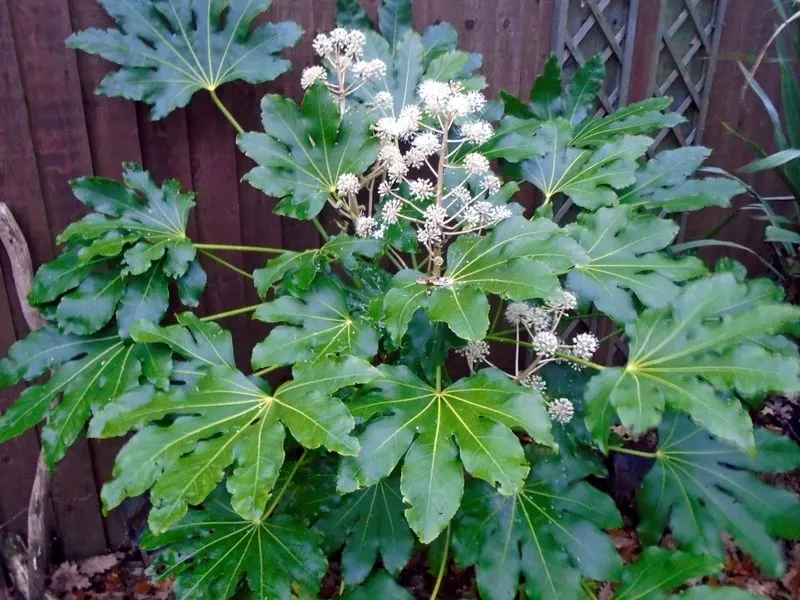
With its glossy, hand-shaped leaves, Japanese Aralia adds a lush, tropical feel to shaded garden areas. It’s perfect for those tricky spots where other plants might falter. Not only does it thrive in low light, but it’s also surprisingly hardy, even withstanding light frost. Its bold foliage provides texture and contrast, complementing ferns and other shade-loving companions. This plant’s adaptability makes it a favorite among gardeners looking to add a touch of elegance.
Canna Lily

Canna Lilies are showstoppers with their bright, fiery blooms and striking foliage. These plants are wonderful for adding height and color to your garden. Though they thrive in full sun, they can tolerate partial shade, making them versatile additions. During late summer, their flowers burst forth, attracting pollinators. To ensure winter survival in colder climates, dig up rhizomes and store them until spring. Their tropical flair is unmatched, making them worth the extra effort.
Elephant Ears (Colocasia)
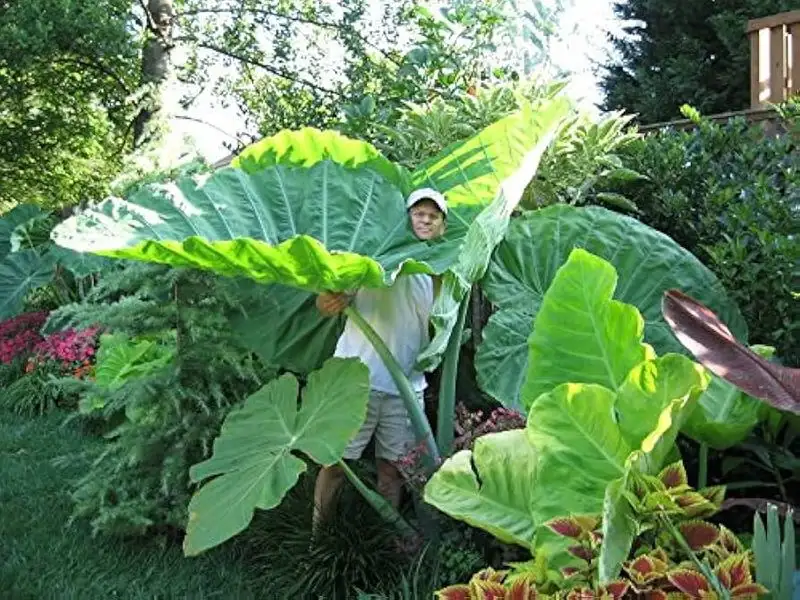
Few plants can compete with the dramatic impact of Elephant Ears. Their enormous, heart-shaped leaves create a bold statement in any garden setting. Best grown in moist, well-drained soil, they thrive in partial shade but can handle full sun with adequate watering. While they may not be cold-hardy, storing the bulbs over winter is a simple task. Their imposing stature and lush appearance make them a garden favorite for those seeking drama and scale.
Hardy Hibiscus (Hibiscus moscheutos)
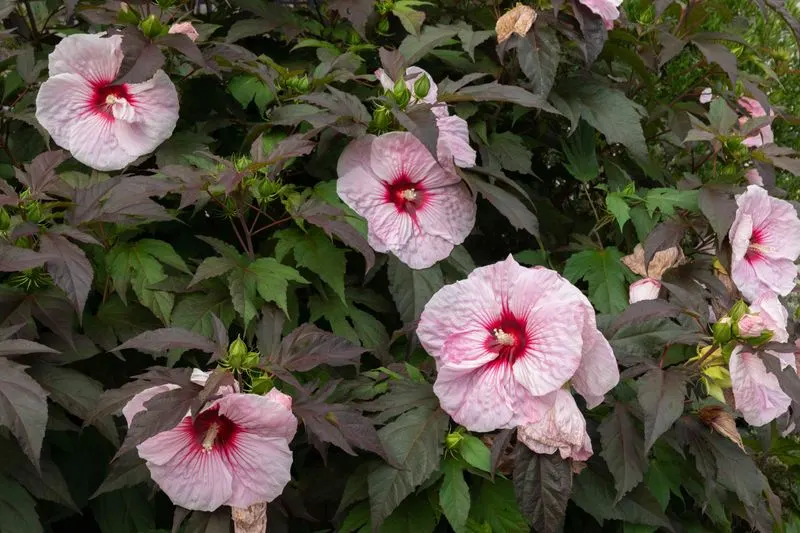
Hardy Hibiscus delights with its enormous, colorful blooms, reminiscent of a tropical getaway. Despite their exotic appearance, these plants withstand colder climates and return annually. Positioned in full sun, they become a magnet for hummingbirds and butterflies. Their blooms, often spanning over 8 inches, provide a stunning display from mid to late summer. This perennial makes a striking addition to any garden, blending seamlessly with both traditional and contemporary landscapes.
Castor Bean Plant (Ricinus communis)

With its dramatic red to purple leaves and spiky seed pods, the Castor Bean Plant is a captivating addition to any garden. While it’s grown for ornamental purposes in cooler climates, caution is advised due to its toxic seeds. It’s often used as a statement plant, adding height and vibrant color to mixed borders. Fast-growing and easy to maintain, it thrives in sunny positions and well-drained soil. Its bold appearance can transform a garden into a tropical retreat.
New Zealand Flax (Phormium)
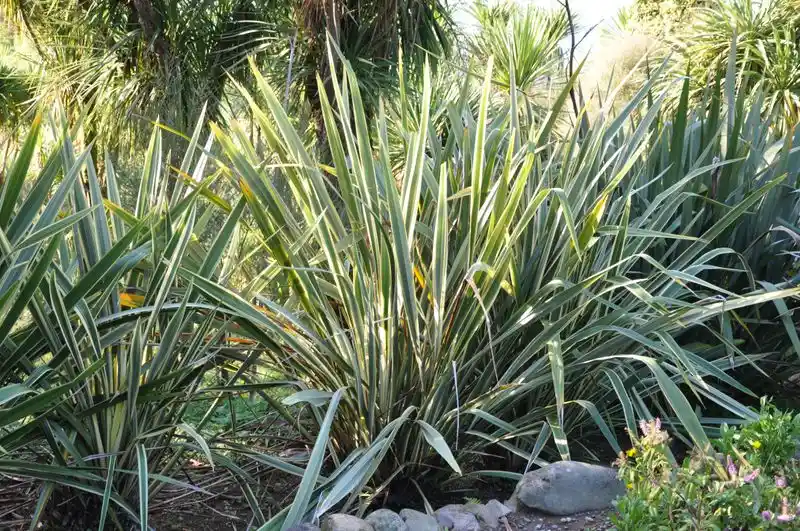
New Zealand Flax captivates with its sword-like leaves that come in a spectrum of colors, from bronze to pink. This versatile plant is a staple in modern garden design, offering year-round interest. It thrives in sunny, well-drained spots and is particularly well-suited for coastal gardens. Resistant to wind and salt, it’s perfect for exposed areas. The architectural form of Phormium adds structure, while its color variations enhance any planting scheme.
Yucca (Yucca filamentosa)
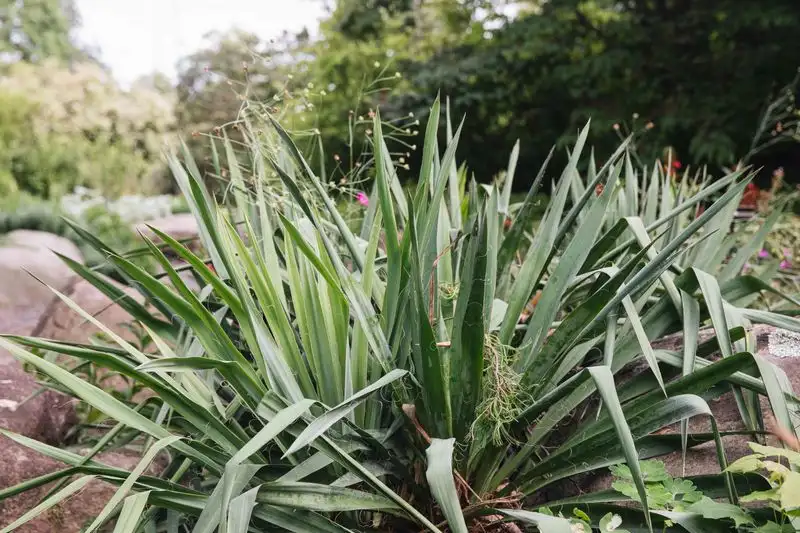
Yucca stands out with its spiky, evergreen leaves and towering flower spikes, evoking a desert landscape. Surprisingly hardy, it thrives in poor, sandy soils and requires little maintenance. Its drought tolerance makes it ideal for xeriscaping, adding texture to rock gardens or dry borders. The dramatic flower stalks, reaching up to 6 feet, add vertical interest and attract pollinators. Yucca’s robust nature and striking appearance make it a valuable addition to any garden.
Blue Fescue (Festuca glauca)
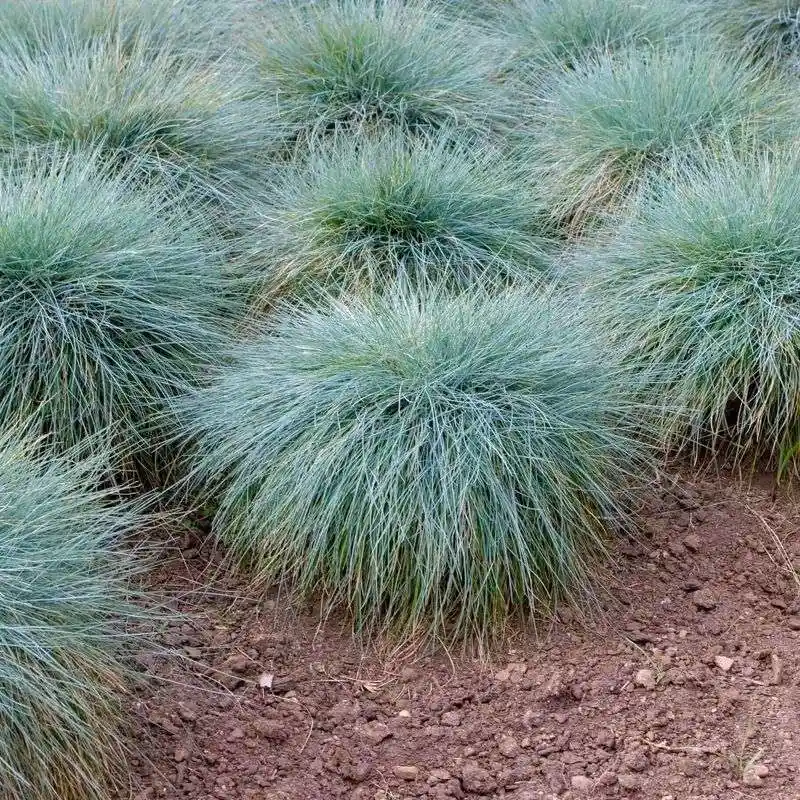
Blue Fescue is a grass that brings a touch of cool elegance with its silvery-blue tufts. This low-growing ornamental grass is perfect for edging, rock gardens, or mass plantings. It requires minimal care and thrives in full sun with well-drained soil. Its fine texture and unique color offer a striking contrast against larger, green-leafed plants. In summer, it produces delicate flower spikes, adding movement and interest. Its drought resistance and compact form make it a garden favorite.
Gunnera (Gunnera manicata)
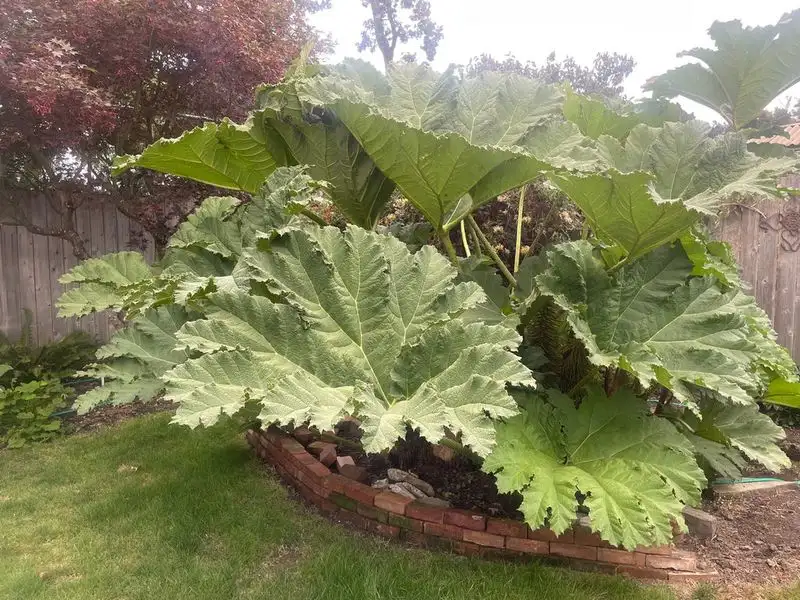
Gunnera, often referred to as ‘Dinosaur Food’, is known for its gigantic, umbrella-like leaves. It creates a prehistoric ambiance by ponds or damp areas. Thriving in rich, moist soil, it can handle the cold as long as it’s given a thick mulch in winter. Its colossal leaves offer shelter to wildlife and make an unforgettable visual statement. Gunnera’s dramatic scale and presence are perfect for those looking to make a bold impact in their garden.
Sweet Box (Sarcococca confusa)

Sweet Box is a delight in the winter garden with its glossy foliage and intoxicatingly fragrant white flowers. This shade-loving shrub fills the air with scent when little else blooms. It’s well-suited for woodland gardens or shaded borders, thriving in well-drained, fertile soil. Not only is it evergreen, but it’s also low maintenance, making it an excellent choice for busy gardeners. Its ability to bring fragrance and greenery to shaded areas is unmatched.
Japanese Forest Grass (Hakonechloa macra)
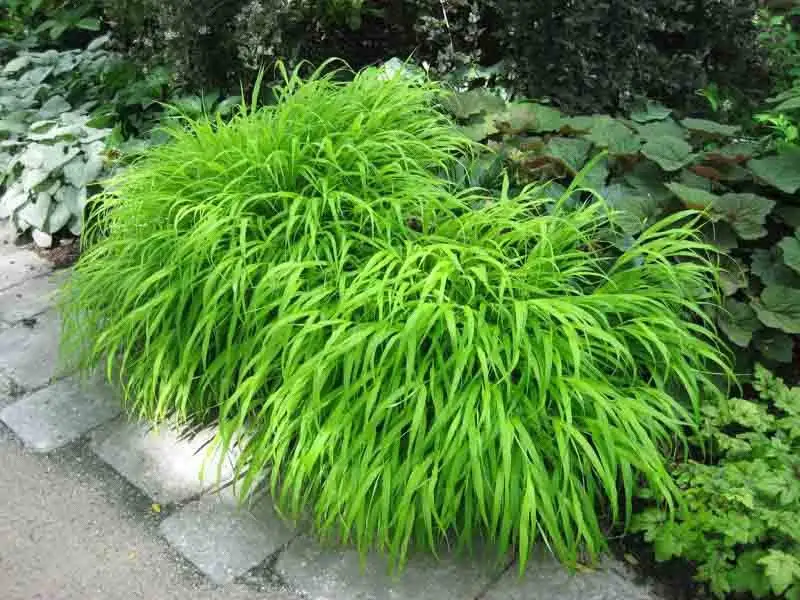
Japanese Forest Grass creates a waterfall of vibrant green, adding movement and texture to shaded gardens. This ornamental grass is ideal for adding softness to the landscape, with its graceful, arching form. It thrives in moist, well-drained soil and performs best in partial to full shade. In autumn, the foliage transforms to a golden hue, extending its interest beyond summer. Its gentle presence and adaptability make it a cherished addition to any garden setting.
Hardy Palm (Trachycarpus fortunei)
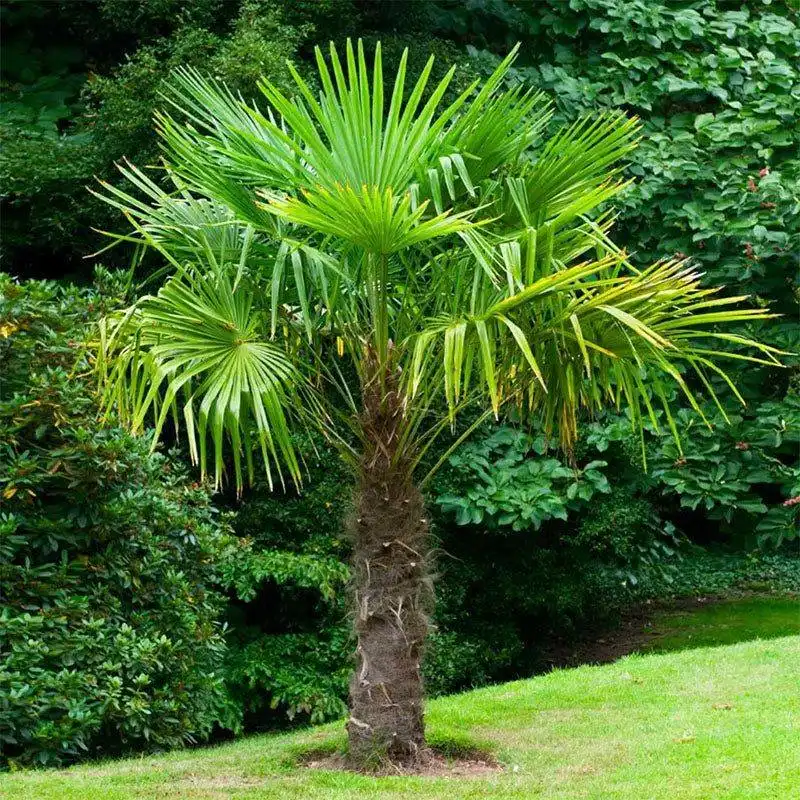
The Hardy Palm defies expectations by thriving in cooler climates, bringing a slice of the tropics to northern gardens. Its fan-like leaves add a touch of exotic elegance, creating a focal point in any landscape. While it can withstand temperatures as low as -10°F, it prefers a sheltered spot with well-drained soil. This palm’s adaptability and resilience make it a standout choice for those seeking tropical flair in unexpected places.
Fiddle Leaf Fig (Ficus lyrata)
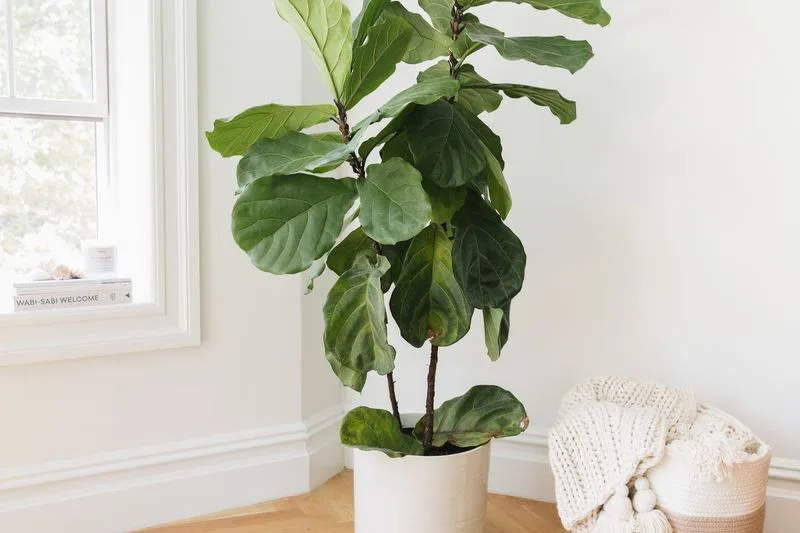
Fiddle Leaf Fig has taken the indoor plant world by storm with its large, glossy leaves and stately presence. Though traditionally an indoor plant, it can be moved outdoors in the summer months in cooler climates. It thrives in bright, indirect light and prefers consistent watering, though it’s forgiving of occasional neglect. Its striking foliage adds architectural interest, making it a favorite for interior designers and plant enthusiasts alike.
Windmill Palm (Trachycarpus wagnerianus)
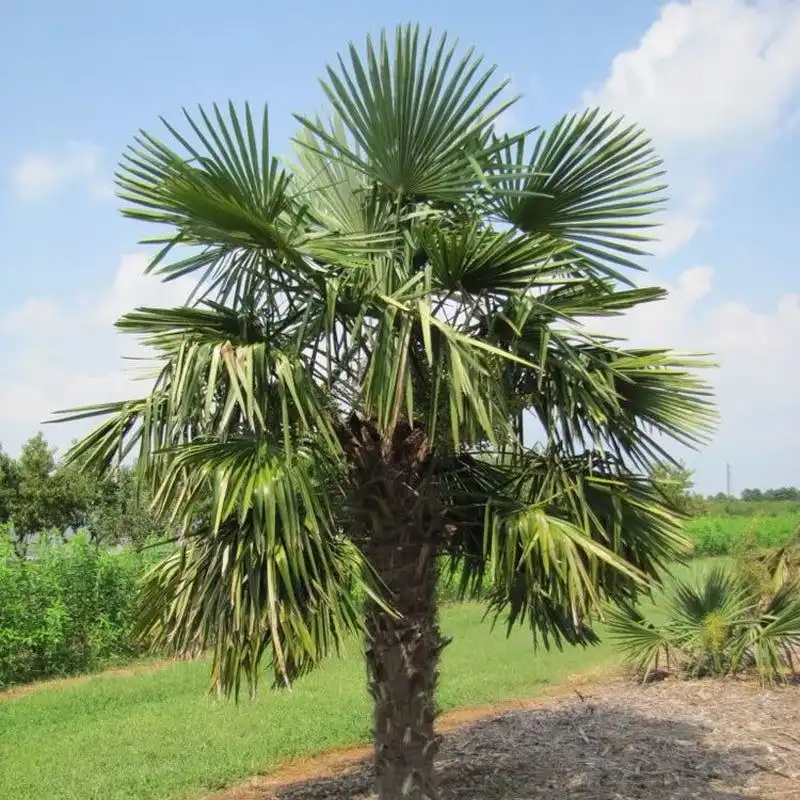
Windmill Palm brings a tropical vibe to northern gardens with its compact, fan-like leaves. Not only is it cold-hardy, but it also adapts well to container gardening, making it versatile for patios and small spaces. It thrives in well-drained soil and full to partial sun, requiring minimal maintenance. With a tolerance for wind, this palm is perfect for exposed areas, adding an exotic touch without the high maintenance of true tropical palms.
Chinese Windmill Palm (Trachycarpus princeps)
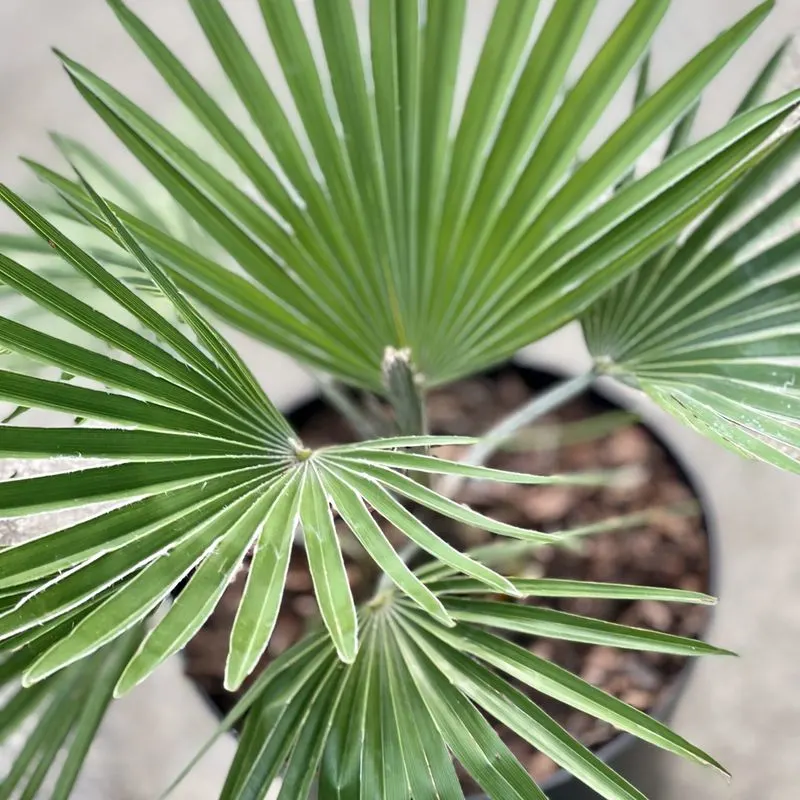
Chinese Windmill Palm boasts a slender trunk and fan-shaped leaves that evoke a tropical paradise, yet it surprises with its cold tolerance. Ideal for urban landscapes, it thrives in well-drained soil and full sun to partial shade. Its resilience to wind and adaptability to various conditions make it a practical choice for city gardens. The palm adds vertical interest and a touch of the exotic, enhancing both contemporary and traditional settings.
European Fan Palm (Chamaerops humilis)
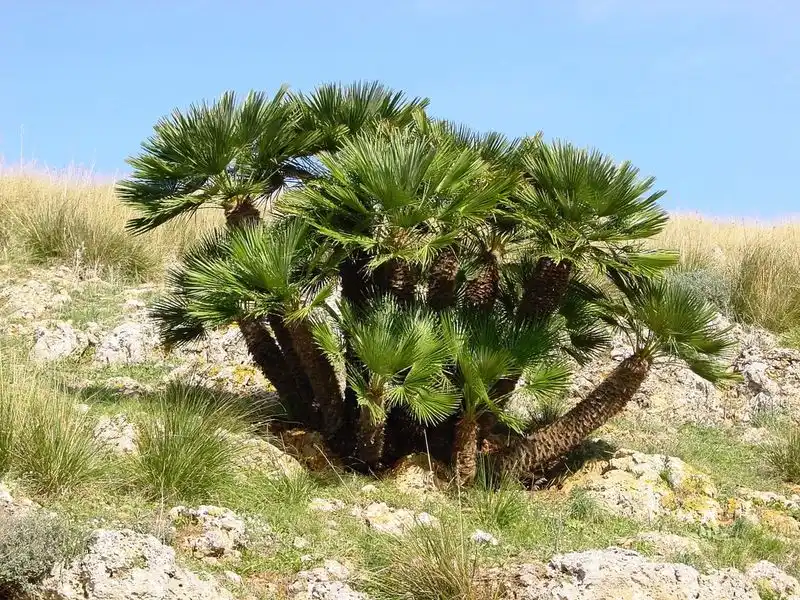
European Fan Palm is a versatile, cold-hardy palm that adds Mediterranean charm to gardens. Its fan-shaped leaves form a dense, rounded clump, perfect for adding texture and interest. Suitable for both garden beds and large containers, it thrives in well-drained soil and full sun. Tolerant of wind and salt, it’s an excellent choice for coastal gardens. Whether used as a focal point or in groups, this palm offers a touch of the exotic with minimal fuss.
Japanese Banana (Musa sikkimensis)

Japanese Banana enchants with its broad, red-tinged leaves, mimicking a tropical paradise while enduring the chill. Hardy to zone 5, the plant dies back in winter but returns robustly in spring. It thrives in rich, well-drained soil and full sun, creating instant tropical allure. Its rapid growth makes it perfect for quickly filling empty spaces. Though it doesn’t fruit in cooler climates, its striking foliage makes it a must-have for tropical garden enthusiasts.
Himalayan Fairy Grass (Miscanthus nepalensis)
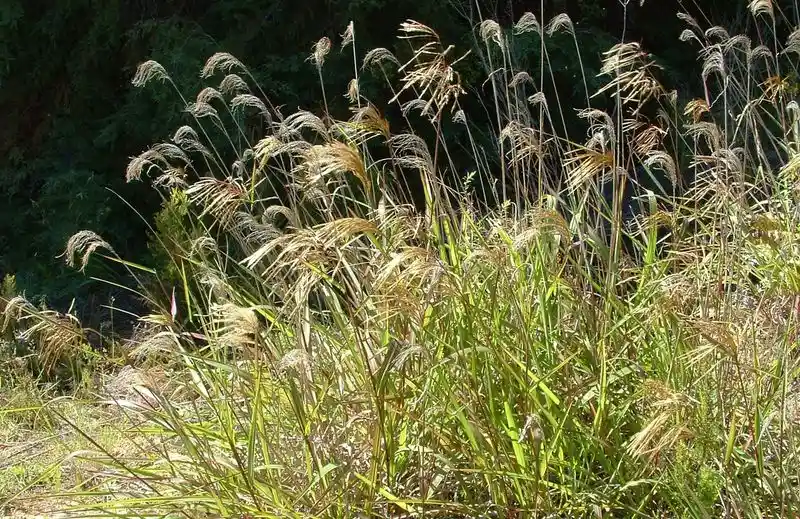
Himalayan Fairy Grass offers a delicate touch with its feathery, golden plumes that dance in the breeze. This ornamental grass thrives in full sun and well-drained soil, providing texture and movement from late summer into fall. Its graceful form complements both modern and traditional garden designs, offering a soft contrast to bolder plants. The plumes remain attractive through winter, adding interest when other plants fade. It’s a low-maintenance choice for gardeners seeking year-round appeal.
Cape Fuchsia (Phygelius)

Cape Fuchsia charms with its tubular, red-orange flowers that attract hummingbirds and other pollinators. Thriving in full sun to partial shade, this plant offers vibrant color from summer into fall. It’s well-suited for borders or containers, where its dense foliage adds depth and texture. Hardy to cooler climates, Cape Fuchsia remains evergreen in milder areas, providing year-round interest. Its extended blooming period and minimal care requirements make it a popular choice in diverse garden settings.
Himalayan Blue Poppy (Meconopsis betonicifolia)
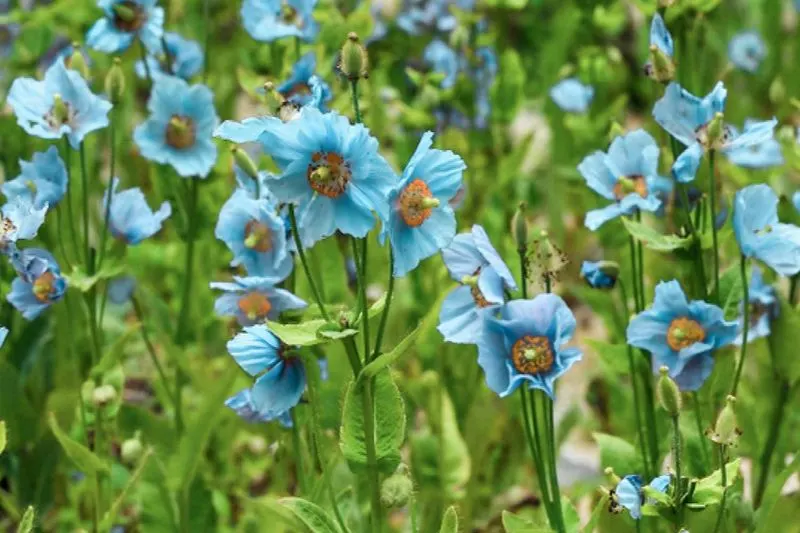
Himalayan Blue Poppy captivates with its rare, sky-blue flowers, offering a cool splash of color in shaded gardens. Preferring moist, well-drained soil and partial shade, it’s a bit finicky but worth the effort for its stunning blooms. This poppy is perfect for woodland gardens, where its ethereal presence can be appreciated up close. While it can be a challenge to grow, the reward of those breathtaking blue blossoms is unmatched, making it a prized addition for adventurous gardeners.

